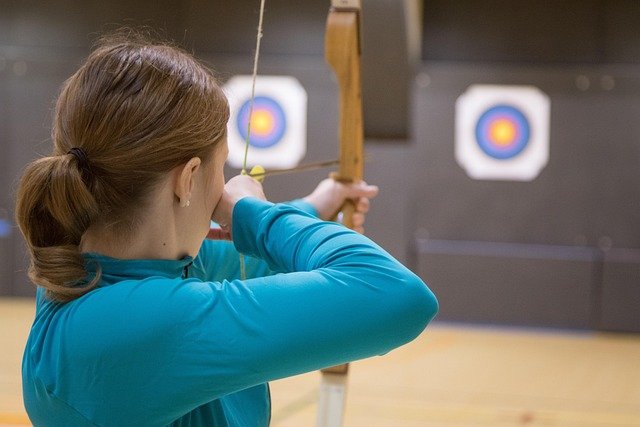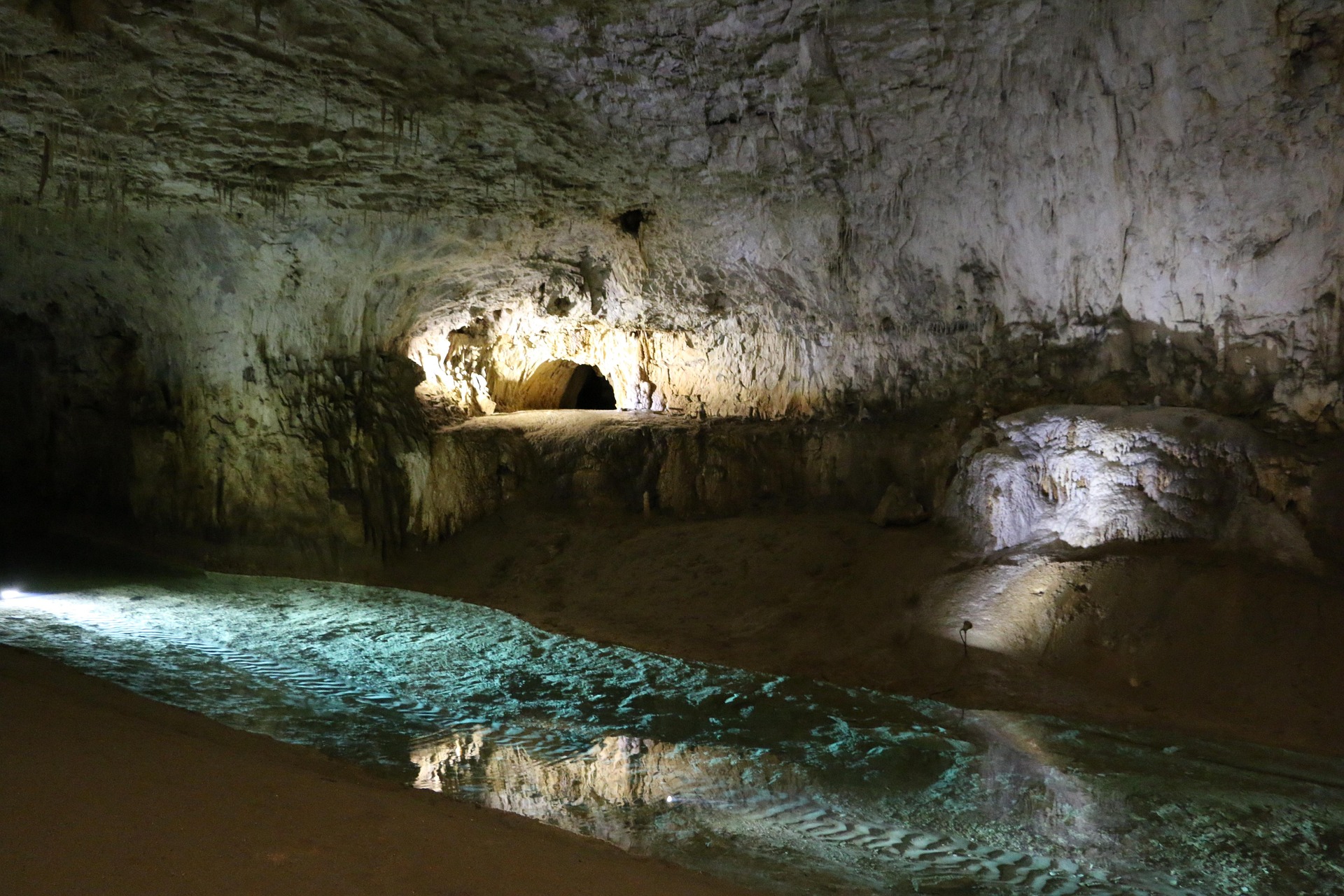Precision Archery: The Art of Mindful Marksmanship
In the realm of precision sports, archery stands as a testament to human focus, physical control, and mental fortitude. This ancient practice, evolved from a survival skill to a competitive sport, demands a unique blend of strength, technique, and unwavering concentration. Today, we delve into the world of precision archery, exploring its nuances, challenges, and the mental mastery required to excel in this demanding discipline.

The Foundations of Precision Archery
Precision archery is more than simply hitting a bullseye. It’s about consistency, repeatability, and the pursuit of perfection in every shot. At its core, this discipline requires archers to develop a deep understanding of their equipment, their body mechanics, and the external factors that influence each arrow’s flight.
The foundation of precision archery lies in proper form. Archers must maintain a consistent stance, grip, and anchor point with each draw. The alignment of the body, from feet to fingertips, plays a crucial role in accuracy. Even the slightest variation can lead to significant deviations in arrow placement, especially at longer distances.
Equipment selection and customization are equally vital. Precision archers meticulously tune their bows, selecting arrows that match their draw length and weight, and adjusting sights to account for various distances and conditions. This level of attention to detail ensures that the equipment becomes an extension of the archer, allowing for maximum control and predictability in each shot.
The Mental Game: Psychology of Precision
While physical technique forms the backbone of precision archery, the mental aspect often separates the good from the great. The ability to maintain focus, manage pressure, and execute consistently under varying conditions is paramount to success in this sport.
Mindfulness and meditation practices have gained traction among top-tier archers. These techniques help cultivate a state of present-moment awareness, allowing archers to block out distractions and maintain laser-like focus on their target. Many practitioners report improved shot consistency and reduced performance anxiety through regular mindfulness training.
Visualization is another powerful tool in the precision archer’s mental arsenal. By mentally rehearsing the perfect shot—from setup to release—archers can reinforce positive muscle memory and boost confidence. This practice, when combined with physical training, can lead to significant improvements in overall performance.
Biomechanics and Body Awareness
Understanding the biomechanics of archery is crucial for those seeking to excel in precision shooting. The intricate interplay of muscles, bones, and joints during the draw and release phases requires careful study and practice to optimize.
One key area of focus is back tension. Proper engagement of the back muscles not only improves shot consistency but also reduces the risk of injury over time. Archers work to develop a keen awareness of their muscle activation patterns, striving for a smooth, controlled release that minimizes bow torque and arrow deviation.
Breathing techniques play a vital role in shot execution. Many top archers synchronize their breathing with their shot cycle, using controlled inhalations and exhalations to steady their aim and maintain composure. This respiratory control can help manage heart rate and reduce tremors, particularly in high-pressure competitive situations.
Technology and Innovation in Precision Archery
While archery is an ancient practice, modern technology has revolutionized the sport, particularly in the realm of precision shooting. Advanced materials and manufacturing techniques have led to bows and arrows that offer unprecedented levels of accuracy and consistency.
Carbon fiber arrows, for instance, provide superior stiffness and weight consistency compared to traditional wooden shafts. This translates to more predictable flight paths and tighter groupings at the target. Similarly, compound bows with advanced cam systems offer smoother draws and faster arrow speeds, allowing for flatter trajectories and reduced wind drift.
High-speed cameras and motion capture technology have become invaluable tools for both coaches and archers. By analyzing shot execution in slow motion, archers can identify subtle inconsistencies in their form and make micro-adjustments to improve accuracy. This data-driven approach to training has helped push the boundaries of what’s possible in precision archery.
Environmental Factors and Adaptability
Mastering precision archery requires more than just perfecting technique in controlled conditions. Top-tier archers must also develop the ability to adapt to varying environmental factors that can impact arrow flight.
Wind is perhaps the most significant challenge in outdoor archery. Even a gentle breeze can dramatically affect an arrow’s trajectory, especially over longer distances. Precision archers learn to read wind patterns, make sight adjustments, and time their shots to minimize these effects. Some even practice in wind tunnels to hone their ability to compensate for different wind speeds and directions.
Temperature and humidity also play roles in arrow performance. Changes in air density can affect arrow speed and drop, requiring archers to make subtle adjustments to their aim. Additionally, extreme temperatures can impact bow and string materials, necessitating equipment modifications to maintain consistency.
Training Regimens for Precision Excellence
Achieving and maintaining a high level of precision in archery demands a comprehensive and disciplined training approach. Elite archers often dedicate several hours each day to practice, focusing on both physical technique and mental preparation.
Physical conditioning forms a crucial part of training. Core strength, shoulder stability, and overall body control are essential for maintaining proper form over extended shooting sessions. Many archers incorporate yoga, Pilates, or specialized strength training routines to enhance their physical capabilities and reduce the risk of repetitive strain injuries.
Blank bale practice, where archers shoot at close range without a target, is a common technique for refining form and muscle memory. This allows archers to focus solely on their execution without the distraction of aiming, helping to ingrain proper technique at a deep, subconscious level.
Simulated competition scenarios are also valuable training tools. By recreating the pressure and time constraints of tournament settings, archers can develop strategies to manage stress and maintain focus when it matters most. Some training programs even incorporate biofeedback devices to help archers monitor and control their physiological responses to pressure.
The Role of Nutrition and Recovery
Often overlooked in discussions of precision sports, nutrition and recovery play vital roles in an archer’s ability to perform consistently at a high level. Proper fueling before and during competitions can have a significant impact on focus, endurance, and fine motor control.
Many archers pay close attention to their hydration levels, recognizing that even mild dehydration can affect muscle tremors and mental clarity. Some experiment with various nutrition strategies, such as timing carbohydrate intake to maintain steady energy levels throughout long competition days.
Recovery practices are equally important, particularly given the repetitive nature of archery training. Regular stretching, massage, and mobility work help prevent overuse injuries and maintain the flexibility required for proper form. Some archers incorporate techniques like dry needling or acupuncture to address muscle tension and promote faster recovery between training sessions.
Competitive Landscape and Elite Performance
The world of competitive precision archery is diverse, with various disciplines catering to different equipment types and shooting styles. Olympic recurve archery, perhaps the most widely recognized form, demands a blend of power, precision, and mental fortitude. Compound bow competitions, while not currently part of the Olympic program, offer their own unique challenges, with archers often shooting perfect or near-perfect scores.
At the elite level, the margins between victory and defeat are incredibly slim. Top archers might shoot hundreds of arrows in a single day of competition, with final placings often determined by just a few points. This level of competition has driven innovations in training methods, equipment design, and mental preparation techniques.
The use of sports psychology has become increasingly prevalent among elite archers. Many work with mental performance coaches to develop personalized strategies for managing pressure, maintaining focus, and bouncing back from setbacks. Techniques such as positive self-talk, anchoring, and pre-shot routines are common tools in the elite archer’s mental toolkit.
Archery Beyond Competition: Applications and Benefits
While competitive precision archery garners much attention, the skills and mindset developed through this discipline have applications far beyond the target range. Many practitioners find that the focus and body awareness cultivated through archery translate to other areas of their lives.
In professional settings, the ability to maintain composure under pressure and execute tasks with precision can be invaluable. Some corporations have even incorporated archery into team-building exercises, recognizing its potential to foster concentration, patience, and goal-setting skills.
From a health perspective, archery offers a unique blend of physical and mental benefits. The repetitive nature of shooting helps improve upper body strength and stability, while the focus required can serve as a form of moving meditation, reducing stress and improving overall well-being.
Technological Advancements in Training and Analysis
As precision archery continues to evolve, technological advancements are playing an increasingly significant role in training and performance analysis. Smart targets equipped with sensors can provide instant feedback on arrow placement, allowing archers to make real-time adjustments to their technique.
Motion capture systems, once the domain of high-performance sports centers, are becoming more accessible to club-level archers. These systems can create detailed 3D models of an archer’s form, allowing for in-depth analysis of body mechanics and identifying areas for improvement that might be invisible to the naked eye.
Virtual reality (VR) training platforms are also emerging as valuable tools for precision archers. These systems can simulate a wide range of competitive scenarios, allowing archers to practice under various conditions without the need for extensive travel or setup. VR training can be particularly beneficial for mental preparation, helping archers acclimate to the pressure of high-stakes competitions in a controlled environment.
The Future of Precision Archery
As we look to the future, precision archery stands at an exciting crossroads of tradition and innovation. Advances in materials science promise even more refined equipment, potentially pushing the boundaries of human accuracy to new limits. Carbon nanotube-reinforced bows and arrows, for instance, could offer unprecedented levels of stability and consistency.
Artificial intelligence and machine learning algorithms are beginning to make their mark on the sport as well. These technologies can analyze vast amounts of performance data, helping archers and coaches identify subtle patterns and optimize training regimens for individual athletes.
The integration of augmented reality (AR) into archery sights is another area of potential growth. AR-enhanced sights could provide archers with real-time data on wind conditions, humidity, and other environmental factors, allowing for more precise adjustments during competition.
Precision Archery as a Lifelong Pursuit
One of the most appealing aspects of precision archery is its accessibility to practitioners of all ages and physical abilities. Unlike many high-impact sports, archery can be enjoyed well into one’s senior years, with many archers finding that their skills continue to improve with age and experience.
This longevity allows for a deep, lifelong exploration of the sport’s nuances. Many archers speak of archery as a journey of self-discovery, with each shot offering an opportunity for learning and growth. The pursuit of the perfect shot becomes a metaphor for personal development, encouraging practitioners to cultivate patience, persistence, and self-awareness.
The Importance of Community in Precision Archery
While archery is often perceived as a solitary sport, the community aspect plays a crucial role in the development of precision shooters. Archery clubs and training centers provide valuable opportunities for knowledge sharing, friendly competition, and mutual support.
Mentorship is particularly important in precision archery. Experienced archers often take novices under their wing, passing down hard-earned wisdom about technique, equipment tuning, and mental preparation. This culture of sharing helps maintain high standards within the sport and ensures that valuable knowledge is preserved and built upon over generations.
Online communities have also become vital hubs for archers worldwide. Forums, social media groups, and video-sharing platforms allow archers to connect, share tips, and discuss the latest developments in equipment and technique. This global network has accelerated the spread of knowledge and innovations within the sport.
Ethical Considerations in Precision Archery
As with any sport involving projectiles, precision archery carries inherent safety considerations. Responsible practice and strict adherence to safety protocols are paramount. Many archery organizations place a strong emphasis on education, ensuring that newcomers to the sport are well-versed in proper handling and range etiquette before they ever nock an arrow.
There’s also an ongoing dialogue within the archery community about the balance between technological advancement and the preservation of traditional skills. While modern equipment has undoubtedly improved accuracy and consistency, some argue that an over-reliance on technology risks diluting the core skills that have defined archery for millennia.
Environmental concerns are another area of focus for many in the precision archery world. Efforts to develop more sustainable arrow materials and promote responsible land use for outdoor ranges reflect a growing awareness of the sport’s environmental impact.
Integrating Precision Archery into Education
Recognizing the multifaceted benefits of archery, some educational institutions have begun incorporating it into their physical education curricula. Beyond the obvious physical skills developed, archery offers valuable lessons in focus, goal-setting, and self-discipline.
For students struggling with traditional academic subjects, archery can provide a unique avenue for building confidence and developing a growth mindset. The clear cause-and-effect relationship between practice and improvement in archery can translate into a more positive approach to learning in other areas.
Some schools have even used archery as a springboard for interdisciplinary learning, incorporating elements of physics, mathematics, and history into their archery programs. This holistic approach not only enriches the learning experience but also demonstrates the real-world applications of academic concepts.
Precision Archery in Popular Culture
The portrayal of archery in popular media has contributed significantly to the sport’s visibility and appeal. Films and television shows featuring skilled archers have sparked interest in the sport, particularly among younger audiences. While these depictions often take artistic liberties with archery techniques, they have nonetheless helped to elevate the profile of precision archery.
This increased visibility has led to collaborations between professional archers and entertainment productions, with experts often consulted to lend authenticity to archery scenes. These partnerships not only improve the quality of archery representations in media but also provide opportunities to educate the public about the realities of the sport.
Video games featuring archery mechanics have also played a role in attracting new practitioners to the sport. While virtual archery can’t replicate the physical demands of real shooting, it can introduce players to concepts like arrow drop, wind drift, and the importance of timing and breath control.
Adaptive Archery and Inclusivity
Precision archery has proven to be an exceptionally inclusive sport, with adaptive equipment and techniques allowing individuals with a wide range of physical abilities to participate and excel. Paralympic archery events showcase the incredible skill and dedication of athletes who have adapted their shooting styles to overcome various physical challenges.
Innovations in adaptive archery equipment continue to expand the sport’s accessibility. Mouth tabs for archers unable to use their hands, wheelchair-specific bow mounts, and a variety of release aids are just a few examples of how technology is making precision archery more inclusive.
The mental aspects of archery make it particularly well-suited for individuals dealing with PTSD, anxiety, or other mental health challenges. The focus required for precision shooting can provide a form of active meditation, offering a reprieve from intrusive thoughts and promoting a sense of calm and control.
The Economics of Precision Archery
As interest in precision archery grows, so too does its economic impact. The archery industry, encompassing equipment manufacturers, training facilities, and competition organizers, contributes significantly to the sports economy in many countries.
Sponsorship deals for top archers, while not reaching the levels seen in more mainstream sports, have been on the rise. This increased financial support allows more athletes to pursue archery as a full-time career, potentially raising the overall standard of competition.
Archery tourism is another growing sector, with enthusiasts traveling to participate in tournaments or train at renowned facilities. Some regions have capitalized on their archery heritage to develop tourism offerings, combining cultural experiences with opportunities for visitors to try their hand at traditional and modern archery forms.
Conclusion: The Endless Quest for Precision
Precision archery stands as a captivating blend of physical skill, mental fortitude, and technological innovation. It offers practitioners a lifelong journey of self-improvement, where the pursuit of the perfect shot becomes a metaphor for personal growth and excellence.
As we’ve explored, the world of precision archery is rich and multifaceted, encompassing aspects of physics, psychology, biomechanics, and more. From the carefully honed techniques passed down through generations to the cutting-edge technologies shaping the sport’s future, archery continues to evolve while maintaining its core essence.
The appeal of precision archery lies not just in the thrill of competition or the satisfaction of a well-placed arrow, but in the profound lessons it teaches about focus, patience, and the harmony of mind and body. As the sport continues to grow and adapt, it offers an enduring testament to the human capacity for precision, control, and the relentless pursuit of excellence.




